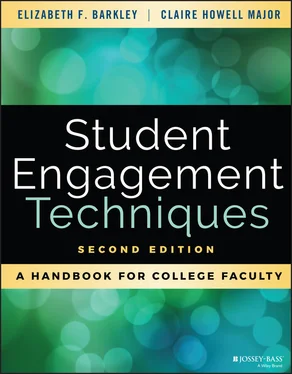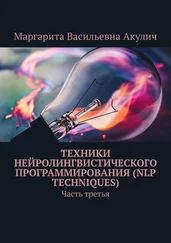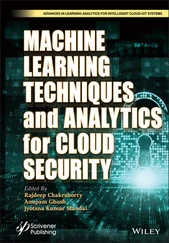Elizabeth F. Barkley - Student Engagement Techniques
Здесь есть возможность читать онлайн «Elizabeth F. Barkley - Student Engagement Techniques» — ознакомительный отрывок электронной книги совершенно бесплатно, а после прочтения отрывка купить полную версию. В некоторых случаях можно слушать аудио, скачать через торрент в формате fb2 и присутствует краткое содержание. Жанр: unrecognised, на английском языке. Описание произведения, (предисловие) а так же отзывы посетителей доступны на портале библиотеки ЛибКат.
- Название:Student Engagement Techniques
- Автор:
- Жанр:
- Год:неизвестен
- ISBN:нет данных
- Рейтинг книги:3 / 5. Голосов: 1
-
Избранное:Добавить в избранное
- Отзывы:
-
Ваша оценка:
- 60
- 1
- 2
- 3
- 4
- 5
Student Engagement Techniques: краткое содержание, описание и аннотация
Предлагаем к чтению аннотацию, описание, краткое содержание или предисловие (зависит от того, что написал сам автор книги «Student Engagement Techniques»). Если вы не нашли необходимую информацию о книге — напишите в комментариях, мы постараемся отыскать её.
— — — —
Student Engagement Techniques
"Student Engagement Techniques
"Student Engagement Techniques
"This book is an essential resource for faculty seeking to better engage with their students. Anyone seeking a clear, research-based, and actionable guide needs a copy of Student Engagement Techniques on their shelf!"
Student Engagement Techniques — читать онлайн ознакомительный отрывок
Ниже представлен текст книги, разбитый по страницам. Система сохранения места последней прочитанной страницы, позволяет с удобством читать онлайн бесплатно книгу «Student Engagement Techniques», без необходимости каждый раз заново искать на чём Вы остановились. Поставьте закладку, и сможете в любой момент перейти на страницу, на которой закончили чтение.
Интервал:
Закладка:
There are many different ways to approach assessment, but to be effective in improving teaching and learning, assessment strategies involve the same basic steps: (1) identify a learning goal; (2) select an assessment technique that will measure to what extent the goal has been achieved; (3) apply the assessment technique; (4) analyze the results of the assessment and share the results with the student(s), ideally providing an opportunity for student feedback; and (5) respond to the results and implement any necessary change in teaching strategy or course content (Fenton & Watkins, 2008, pp. 6–7). In our 2016 book on learning assessment, we similarly suggest that assessment should involve:
1 Identifying significant learning goals
2 Implementing effective learning activities
3 Analyzing and reporting upon outcomes
Metacognition
Students who reflect on their learning are better learners than those who do not. Being aware of oneself as a learner and constantly monitoring the effectiveness of one's learning involves metacognition, a term used by cognitive psychologists to describe the so-called executive function of the mind. As we suggested in our 2016 book Learning Assessment Techniques , there are two prominent characteristics of metacognition: knowledge of cognition and self-regulation of cognition. According to McGuire (2018), metacognition includes the ability to (a) think about your own thinking, (b) be consciously aware of yourself as a problem solver, (c) monitor, plan, and control your mental processing, and (d) accurately judge your level of learning. Nilson (2013) argues that meta-cognition is an important component of self-regulation, but the latter is the larger concept: “… self-regulation encompasses the monitoring and managing of one's cognitive processes as well as the awareness of and control over one's emotions, motivations, behavior, and environment as related to learning” (p. 5). Activities such as planning how to approach a given learning task, monitoring comprehension, and evaluating progress toward the completion of a task play a critical role in successful learning in college and university courses.
Metacognitive strategies require activity on the part of the learner, not for grading purposes but for the pedagogical purpose of actively monitoring and controlling the learning processes. Teachers can help students develop the metacognitive strategies that enable them to exert more control over the quality of their learning. After all, in the final analysis, the learners themselves are in the best position to determine whether or not they are learning at their optimal level of challenge.
Empowering Students as Partners in theLearning Process
Because optimal challenge zones are determined by an individual student's unique needs, it helps if students are empowered partners in the learning process. When students have the power to make decisions regarding their own learning, they can take steps to ensure they are working in their optimal challenge zone. Weimer (2002) identifies sharing power with students as the first of five key changes required to shift to learner-centered teaching. Her chapter on the balance of power opens with this paragraph:
How would you characterize today's college students? Empowered, confident, self-motivated learners? That is not how I would describe mine. The ones in my classes are hopeful but generally anxious and tentative. They want all classes to be easy but expect that most will be hard. They wish their major (whatever it might be) did not require math, science, or English courses. A good number will not speak in class unless called on. Most like, want, indeed need, teachers who tell them exactly what to do. Education is something done unto them. It frequently involves stress, anxiety, and other forms of discomfort. (p. 23)
Weimer's description evokes a wonderfully clear and instantly recognizable image of disengaged students. She discusses power sharing from many perspectives, including summarizing the major themes in the writings of radical, critical pedagogues such as Freire and Hooks, noting the emphasis they give to the influence of power on the motivation to learn and on learning outcomes themselves. She also observes, “teacher authority is so taken for granted that most of us are no longer aware of the extent to which we direct student learning” (p. 23) and provides ample evidence of the power differential between teacher and students in typical college classes.
In Weimer's own teaching, she observes that when it becomes clear that she is not going to tell students what to do, they begin to exercise their power tentatively and anxiously, wanting feedback and needing reinforcement in order to move forward with a bit more confidence. She then shares:
It is difficult to say precisely when it happens, but one day, quite unexpectedly, the students are engaged and involved with the course and its content. There is an energy about the class, a kind of enthusiasm. Instructional nirvana does not descend. Not everybody is involved and engaged, and some activities and assignments still bomb. But student response to my efforts to share power has been the most eloquent evidence to me that learner-centered teaching is a powerful pedagogy. (pp. 30–31)
Empowering students to be active partners in their learning requires a subtle but thorough shift in focus away from what the teacher is teaching to what and how the student is learning.
Providing students with high-quality assessment and feedback, helping students to develop metacognitive skills, and empowering students as partners in the learning process are three approaches to helping students work in their optimal challenge zone. These strategies also help create synergy by connecting active learning (students are “stretching” to learn something that is at the edge of their current understanding) and motivation (this challenge is stimulating and positive both because it is new and because it is within reach).
Condition 3: Teachers Can Create Synergy by Teaching so That Students Learn Holistically
As college professors, we flourish in the “thinking” world. When we consider college-level learning, we readily understand and value the acquisition, synthesis, and evaluation of knowledge that characterizes abstract thought. Bloom's taxonomy of the cognitive domain, which classifies behaviors such as these into a series of hierarchical levels, has served as a guide to faculty in all kinds of institutions as they design and develop their courses. But learning involves more than rational thinking. Even the definition of cognition itself moves beyond pure intellectual reasoning to include processes such as intuition and perception. Furthermore, new models of “intelligence”—such as Gardner's “multiple intelligences” (which contains a bodily-kinesthetic component) and Goleman's “emotional intelligence” (which emphasizes the ability to monitor one's own and other's feelings)—challenge us to embrace a concept of learning that extends beyond logical thinking.
This broader, more inclusive perspective is also supported by neuroscience. Harvard clinical psychologist John Ratey (2002) observes that the “new view” is that brain and body systems are distributed over the whole person and that we cannot separate emotion, cognition, and the physical body. In fact, separating these functions “is rapidly coming to be seen as ridiculous” (p. 223). Thus, despite higher education's historical emphasis on the purely intellectual, many educators today recognize that the body, heart, and mind are all involved in learning, and that all three make contributions to engagement. Some individuals, such as McTighe and Wiggins (1999a), Shulman (2002), and Fink (2003), are suggesting new taxonomies that integrate multiple domains.
Читать дальшеИнтервал:
Закладка:
Похожие книги на «Student Engagement Techniques»
Представляем Вашему вниманию похожие книги на «Student Engagement Techniques» списком для выбора. Мы отобрали схожую по названию и смыслу литературу в надежде предоставить читателям больше вариантов отыскать новые, интересные, ещё непрочитанные произведения.
Обсуждение, отзывы о книге «Student Engagement Techniques» и просто собственные мнения читателей. Оставьте ваши комментарии, напишите, что Вы думаете о произведении, его смысле или главных героях. Укажите что конкретно понравилось, а что нет, и почему Вы так считаете.












